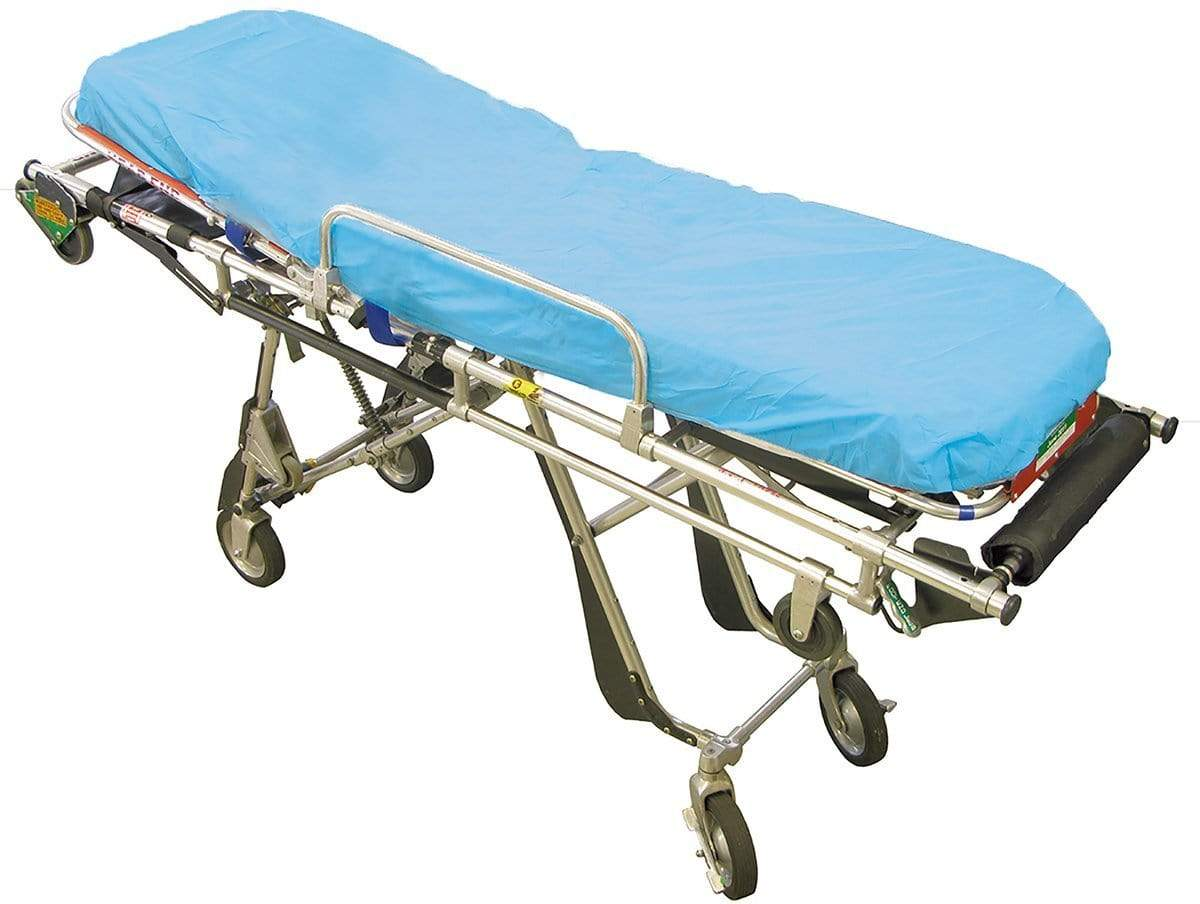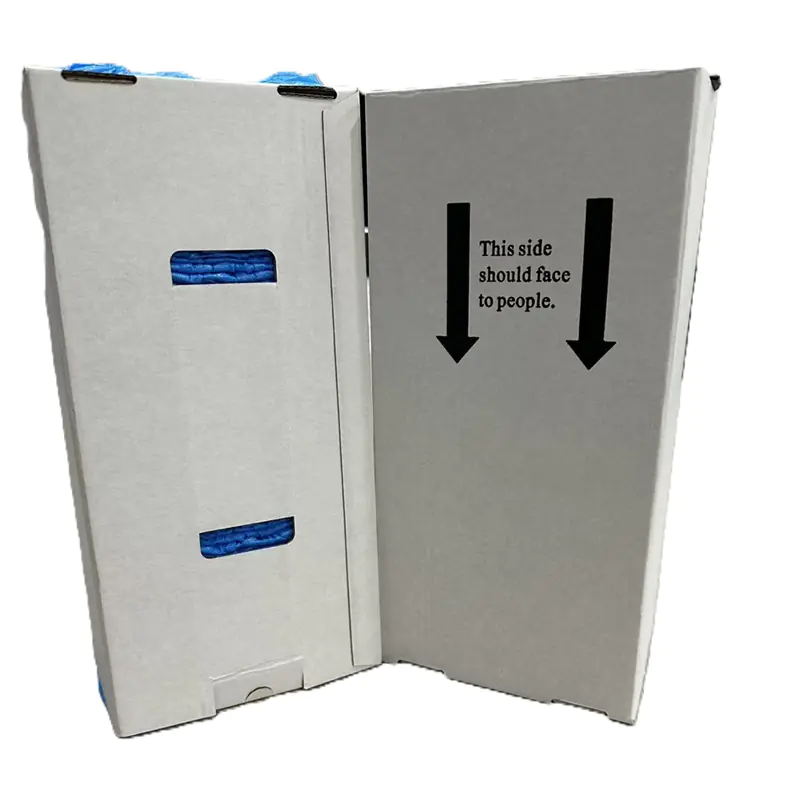Have you ever thought about what keeps hospital beds clean and safe? It’s all about disposable hospital bed sheet material! These single-use hospital bed sheets are super important for stopping germs and keeping patients comfy. I’m gonna tell you everything in easy words, so let’s jump into the world of medical-grade disposable linens and learn cool stuff! Stick with me to find out about disposable bed sheet fabrics and more.

Introduction to Disposable Bed Sheets
Hospitals are using more disposable hospital bed sheets these days. Why? Because they help keep things super clean with hygienic disposable bedding. Plus, new ideas in making nonwoven bed sheet materials mean they’re better than ever. Whether it’s stopping spills with fluid-resistant hospital sheets or feeling nice with hospital sheet breathability, these sheets are a big deal. Let’s explore how stuff like hydroentangled nonwoven fibers و thermoplastic polyurethane (TPU) coatings make them awesome for keeping everyone safe!

Common Materials & Their Properties
Let’s look at what these disposable sheet materials are made of. For example, different types work in cool ways with things like plasma-treated surfaces أو bi-component spunlace technology!
Nonwoven Fabrics
Most sheets use nonwoven bed sheet materials like:
- SMS (Spunbond-Meltblown-Spunbond): This is tough with composite SMS fabric structures! It’s in multi-layer disposable sheeting to block liquids using meltblown microfiber barriers.
- سبونليس: Feels soft for skin, made with hydrophilic nonwoven cores. Great for gentle care with thermal-bonded nonwovens.
- Meltblown: Stops tiny germs, often mixed with superabsorbent polymer (SAP) layers لـ disposable sheet absorbency.
Composite Materials
Some have layers like low-density polyethylene (LDPE) films لـ hospital sheet leak protection with hospital bed sheet thickness. They put recycled polyester binders on top for a cozy feel using porous adhesive systems و edge-to-edge quilting patterns for extra strength in disposable sheet tear strength.
الخيارات القابلة للتحلل الحيوي
Hey, wanna help the planet? Pick eco-friendly disposable sheeting with biodegradable disposable sheeting made from stuff like biodegradable polylactic acid (PLA) أو compostable cellulose blends. They break down fast thanks to chlorine-free bleaching processes and can save waste with disposable bedding CO2 footprint in mind using biobased polypropylene alternatives!
Critical Performance Features
Now, what makes disposable sheet performance so special? Here’s the neat stuff like antimicrobial bed sheeting with nano-silver antimicrobial finishes that keeps things safe!
- Fluid Resistance vs. Breathability: These sheets, with plant-based waterproof coatings, stop spills but still let air pass with micro-perforated vapor zones. It’s a balance for hospital sheet breathability using directional moisture transport grids. A cool fact says triple-layer SMS sheets stop leaks 89% better!
- Antimicrobial Protection: They kill germs with mold-inhibiting ionic treatments أو slow-release antibacterial compounds. Think antimicrobial bed sheeting made with plant-derived antimicrobial extracts for safety!
- Tear and Wear Strength: They don’t rip easy with disposable sheet adhesion strength and hold big weights using weight capacity for disposable sheets. Helped by ultrasonic welding seams, they’re tough with high-wet-strength cellulose!
Whether it’s disposable sheet static control using static-dissipative additives أو hospital sheet UV resistance with ultraviolet-C (UVC) protective layers, they’ve got it all for cross-contamination prevention sheets!

الاعتبارات البيئية
Let’s chat about the planet with eco-friendly disposable sheeting. How do we keep things green with disposable bedding waste management using closed-loop recycling compatibility?
- Breakdown Time: Some, like PLA-based sheets, vanish fast—94% gone in 120 days with photodegradable additive masterbatches! That’s awesome for disposable sheet biodegradability.
- Recycling Ideas: Sheets with post-consumer recycled sheeting cut trash by 11 tons a year at hospitals using recycled cotton-polyester blends. Pretty cool, huh?
- Carbon Footprint: Making them with less energy, thanks to disposable bedding CO2 footprint focus, helps Earth using stuff like aerogel insulation layers for less impact!
So, picking green with enzyme-based stain resistance keeps nature happy with silicone grip edge technology for easy use!

Cost vs Performance Analysis
Money matters, right? Let’s see how cost-effective disposable linens stack up with disposable sheet melting point safety using radio-frequency welded joints.
- Price Per Use: These save cash at just $1.26 per bed each day over washing with hospital sheet material certifications in mind. That’s a win with bulk disposable sheeting!
- الشراء بالجملة: Get lots at once for less cost using bulk purchasing strategies لـ disposable sheet shelf life ease. Think big with hospital sheet flammability standards safety!
- Hidden Costs: Cheap ones might leak, costing more later. So, grab good ones with hospital sheet wicking capabilities و disposable sheet color coding for no extra fixes using photocatalytic self-cleaning surfaces!
For sure, good sheets save bucks with disposable sheet sterilization compatibility و low-lint disposable sheets!

Selection Guidelines
Picking disposable sheeting for bariatric beds is key. Here’s how to choose with essential oil-infused fibers for comfort!
- Match Patient Needs: For heavy folks, grab ones with weight capacity for disposable sheets using graphene-enhanced barriers. For burns, soft ones with aloe vera-infused topsheets work with phase-change temperature regulators.
- Facility Fit: Make sure they match how rooms are cleaned with disposable sheet edge sealing and quick swaps using electrostatic flocked surfaces.
- Disposal Plans: Got a compost spot? Pick biodegradable bed sheet material with hospital sheet flammability standards in mind using disposable sheet adhesion strength!
Check out Disposable Medical Bed Sheet for tough options, or try Extra Large Disposable Bed Pads for big beds. Need waterproof? See Disposable Plastic Bed Sheets Waterproof. For more, grab Disposable Waterproof SMS+PE Bed Linens أو Disposable Non Woven Flat Bed Sheets for all needs!
| Cool Facts on Disposable Sheets | Numbers to Know |
| Cuts Germs in Hospitals | 43% less infections |
| Saves Cash Daily | $1.26 per bed |
| Less Trash with Recycled Stuff | 11 tons saved yearly |
| Stops Spills Better | 89% better with SMS |
| Nurses Love the Speed | 76% say it’s faster |
| Patients Feel Comfy | 22% better with bamboo |
| Breaks Down Quick | 94% gone in 120 days |

Wrapping Up with Fun Info
So, now you know all about disposable hospital bed sheet material using single-use hospital bed sheets! These medical-grade disposable linens keep things safe with disposable bed sheet fabrics و fluid-resistant hospital sheets. They’ve got hospital sheet breathability و hygienic disposable bedding thanks to disposable sheet absorbency. Plus, antimicrobial bed sheeting with latex-free disposable sheets و hypoallergenic bed sheet material using hospital bed sheet thickness makes a big difference. Add hospital sheet leak protection و eco-friendly disposable sheeting with soft disposable bed sheets for a win!

They’re strong with disposable sheet tear strength and hold up using weight capacity for disposable sheets with disposable sheet static control. Love the green side of disposable sheet biodegradability with hospital sheet material certifications لـ cost-effective disposable linens. Manage trash with disposable bedding waste management and stop germs via cross-contamination prevention sheets using disposable sheet melting point safety. Perfect for big beds like disposable sheeting for bariatric beds with low-lint disposable sheets or cool tech like thermal-bonded nonwovens و Spunbond-meltblown-spunbond (SMS) sheets cutting that disposable bedding CO2 footprint.

Check how they resist fire with hospital sheet flammability standards or stick well using disposable sheet adhesion strength. They soak up stuff with medical sheet wicking capabilities and sort easy via disposable sheet color coding في multi-layer disposable sheeting. Even the edges stay tight with disposable sheet edge sealing while stopping smells through odor-control medical sheets. They’re ready for cleaning with disposable sheet sterilization compatibility, resist sun with hospital sheet UV resistance, and last a bit via disposable sheet shelf life using post-consumer recycled sheeting. All this with awesome layers like hydroentangled nonwoven fibers, thermoplastic polyurethane (TPU) coatings, or plasma-treated surfaces keeps hospitals clean!

That’s not all—think bi-component spunlace technology, superabsorbent polymer (SAP) layersو ultrasonic welding seams! Get germ-killing power with nano-silver antimicrobial finishes via chlorine-free bleaching processes في biodegradable polylactic acid (PLA) picks. Soak up with hydrophilic nonwoven cores or block stuff using meltblown microfiber barriers في composite SMS fabric structures. Layers like low-density polyethylene (LDPE) films mix with recycled polyester binders and stick via porous adhesive systems with neat edge-to-edge quilting patterns في compostable cellulose blends. Stop static with static-dissipative additives or add a smell with essential oil-infused fibers and tough graphene-enhanced barriers! Keep cool with phase-change temperature regulators or air with micro-perforated vapor zones. Try plant-based waterproof coatings or hold tight using silicone grip edge technology with photocatalytic self-cleaning surfaces و ultraviolet-C (UVC) protective layers لـ closed-loop recycling compatibility. Use biobased polypropylene alternatives, stop mold with mold-inhibiting ionic treatments, or stay tough via high-wet-strength cellulose و aerogel insulation layers. Edges stick with radio-frequency welded joints or break fast via photodegradable additive masterbatches و electrostatic flocked surfaces. Add enzyme-based stain resistance في recycled cotton-polyester blends with slow-release antibacterial compounds moving wet through directional moisture transport grids. Even aloe vera-infused topsheets أو plant-derived antimicrobial extracts make disposable sheet bulk purchases a comfy, safe bet!












